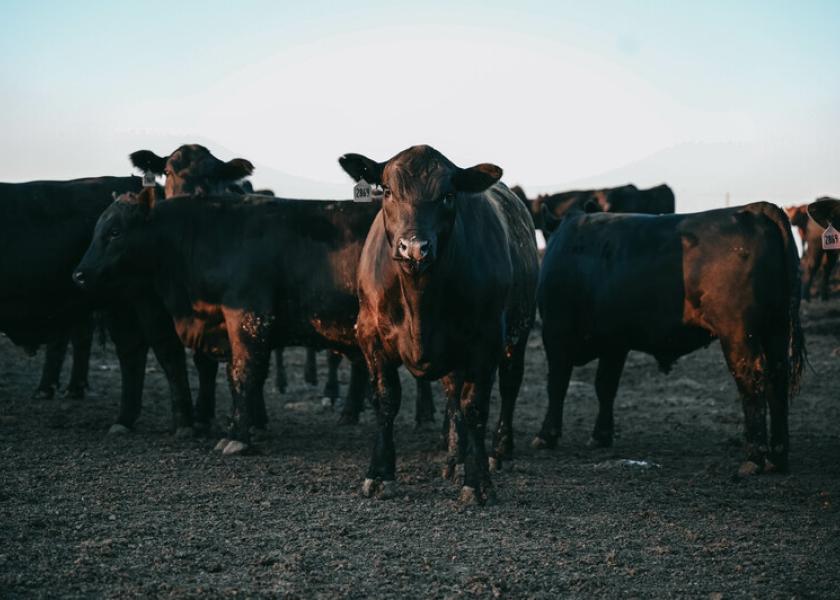Proposed ‘Fed Cattle Set-Aside Program’ Surfaces

A proposal that would fund placing feedlot cattle on a maintenance diet for 75 days is being circulated in Washington D.C.
The seven-page proposal, called a “Fed Cattle Set-Aside Program,” would seek to “alleviate the risk of massive economic collapse in the beef cattle industry.” The proposal was developed by the Beef Alliance and modeled after a set-aside program used in Canada after the BSE crisis in 2004. The Beef Alliance is an organization of commercial cattle feeders with members in Kansas, Nebraska, Colorado, Texas and the Pacific Northwest. According to the Beef Alliance, the group represents approximately 25% of the U.S. fed cattle supply.
According to Pro Farmer policy analyst Jim Wiesmeyer, the proposal is “floating around Washington and the cattle industry.”
A Beef Alliance spokesperson told Drovers the proposed fed cattle set-aside program was developed using USDA data with assistance from CattleFax. The Beef Alliance hopes to build a coalition of support for the proposal from other beef industry groups and members of Congress.
The beef industry has struggled in recent weeks with cattle harvest 30% to 40% below year ago levels. This week analysts say federally inspected slaughter may not reach 450,000. One estimate suggests that every week that sub-500,000 head weekly slaughter occurs, 150,000 to 240,000 cattle will be carried forward. This would be week four of such harvest backlogs.
The Fed Cattle Set-Aside Program proposal would fund placing cattle on a maintenance diet for 75 days. Under the guidelines, an advisory committee would make a weekly recommendation to the program administrator on the number of fed cattle to take into the 75-day program, and the number of cattle which may be released from the program earlier than 75 days.
The proposed payment rate for cattle in the set-aside program would be fixed at $2.90 per head per day and is intended to offset additional feed and operating costs incurred by holding cattle back from slaughter for 75 days.
For the first enrollment period, the total carryover will be available for enrollment, and through April 30 that carryover was 600,000 head.
Other provisions of the proposal include:
- Fed cattle placed in the program may not be offered for slaughter until after 75 program days
- Any decision by the advisory committee regarding number of cattle to take into the program will be based on the weekly backlog of market-ready cattle, and any decision by the advisory committee to release early will be based on a return to 95 percent processing capacity based on the daily harvest total capacity (pre-COVID-19 was approximately 98,000 head per day).
- Cattle released early from the program are exited on a “first-in, first-out” basis on a prorated basis per region – cattle in the program for the longest time will be released before cattle in the program with fewer days.
- Additional feed and operating costs incurred are roughly offset by program payments
The proposal notes that due to COVID-19, beef packing plants cannot run at capacity due to labor force safety and health issues, therefore harvest capacity is significantly reduced.
“This program will give the industry a voluntary tool that will reduce the immediate pressure to harvest fed cattle until beef processors are operating at sufficient capacities to harvest them. It will also ensure food security — namely high-quality protein — for consumers. While the concept is simple, the impact will be significant. The Fed Cattle Set-Aside Program will prevent enormous downward pressure on the entire beef supply chain.”
The report notes that USDA has established a National Incident Coordination Center to provide support to producers by helping them identify alternative markets as the many plants are operating at a limited capacity or not at all. This center does not address the bigger issue of oversupply and reduced packing capacity.
Backlogs of market ready animals are not a unique challenge for the beef industry, the report adds. “Other proteins are experiencing the same reduced processing capacity situation. In the beef cattle industry, however, cattle can be placed on a maintenance diet, holding them back from slaughter, without impacting the animal’s health or well-being. The proposed voluntary set-aside program can be a tool to incentivize cattle feeders to place cattle on a maintenance diet and hold cattle back from slaughter, eventually fixing the imbalance in the marketplace. Processing thresholds would be established to trigger the program to 'kick in' during times of processing capacity reductions and to cease operations as processing capacity comes back online. This should help prevent the backlog crisis situation we are facing today.”
The proposal says, “This program is not intended to allow producers to recoup all economic damages. It will prevent massive economic loss throughout the entire beef cattle industry caused by a total breakdown in a system that has oversupply due to removal of production capacity. The proposed set-aside program will also provide certainty and confidence in the food supply.”
Related stories:
As Margins Collapse, Cattle Producers' Biggest Challenge is Survival







